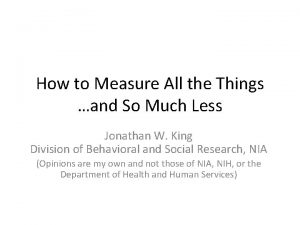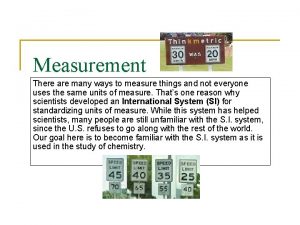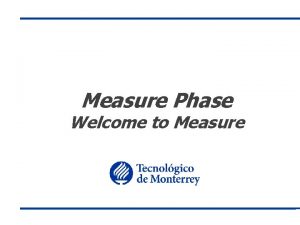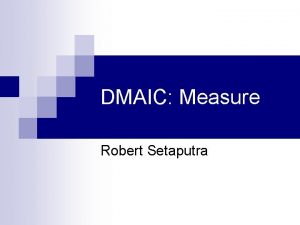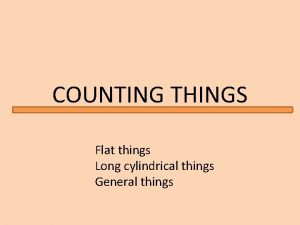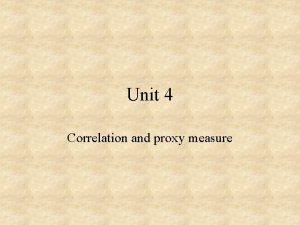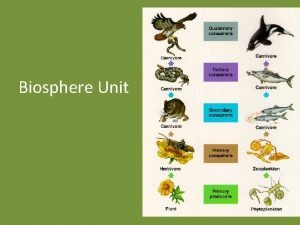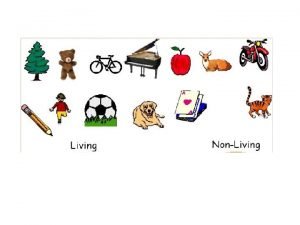How to Measure All the Things and So


































- Slides: 34

How to Measure All the Things …and So Much Less Jonathan W. King Division of Behavioral and Social Research, NIA (Opinions are my own and not those of NIA, NIH, or the Department of Health and Human Services)

What is Self-regulation? (Images from www. igniter. com; this is not the Stanford study)

Varieties of Self-Regulation Impulsivity Delay discounting Conscientiousness Will-power Self-monitoring Reward sensitivity Self-regulation Inhibition Executive attention Effortful control Self-control Stress reactivity Emotion regulation

FTO: From T 2 D to BMI to Eating • • FTO in humans affects eating behavior (energy intake): carriers of AA genotype at rs 9939609 eat ~280 kcal/day more than those with TT genotype. Those with AT genotype weigh 1. 2 kg more than those with TT; those with AA genotype weigh 3. 0 kg more (Frayling et al. , 2007). BUT FTO is also associated with changes in verbal fluency (Benedict et al. , 2011) and reductions in brain volume in aging (Ho et al. , 2010). One marshmallow (7 g) contains ~23 kcal.

Health and Retirement Study (HRS) GWAS • Nationally representative, population based sample of those 50+ (and spouses) beginning in 1992 measured biennially. • Very rich data on longitudinal behavioral and social variables, plus administrative linkages to SSA and CMS data. • Genotyping of 12, 507 participants for 2. 5 M SNPs available at db. Ga. P now; data from ~7, 000 additional participants and Illumina exome chip data on the whole sample by the end of 2014. • HRS GWAS data can be used not only in the context of larger consortia for discovery and replication, but also for determination of heritability of traits in the US population (see Yang et al. 2010), studies requiring selection by genotype, and studies that can exploit the full genetic diversity of the US population.

Population Structure of the US (50+) (Scatter plot of first two principal components) Hap. Map Controls (N=1230) HRS Participants (N=12, 507) HRS GWAS data will help us better understand the contribution of genetic variation to health and well-being in a truly representative sample. Advances in analytical techniques may be required to exploit this resource to its fullest.

Cognitive Measures in HRS that Matter Mental Status: What is today’s date? Backwards Counting from 20 Serial 7 s (subtract 7 from 100…repeat 4 times) “What do you usually use to cut paper? “What do you call the kind of prickly plant that grows in the desert? ” “Name the current president” Episodic Memory: Immediate recall (10 word list) Delayed recall (same 10 word list)

HRS Episodic Memory Total N= 12, 507; as retrieved from db. Ga. P

Mental Retirement? Rohwedder and Willis (2010)

UK Bio. Bank “Pairs” Memory Data (number of errors) Decile 9 6 Decile 8 4 Decile 7 3 Decile 6 2 Median 1 Decile 4 1 Decile 3 0 Decile 2 0 Decile 1 0 Minimum 0 N=498, 709; over 30% of participants received perfect scores, limiting explainable variation.

Carroll Three Stratum Model of Cognition “Composite” Cognitive ability (g) captures nine Broad and dozens of Narrow abilities. (Conceptual model by Carroll, 1993; figure from wikipedia. org)

Bio. Bank Fluid Intelligence N = 165, 645. Fluid Intelligence includes 13 items including a synonym item, an antonym item, number series items, and other brief measures.

HRS Number Series task now uses 6 (and not 47) items. The “Half Adaptive” Number series task now takes one eighth of the time to administer, can be given by phone, does not require the administrator to use a computer, and measures the same construct as the “classical” version.

9 th Grade Information Data (N=103, 893 Ninth graders; N=1173 Schools) Student Level Data School Level Data “School” accounts for approximately 35% of the variance in Project TALENT data.

Gc: Information / Vocabulary

(Endo)phenotypes (From genetic epidemiology of psychiatric disorders) Prepulse Inhibition: startle response (e. g. , a blink elicited by a loud sound) is inhibited by a prepulse (e. g. , a quieter sound 100 ms earlier). [Schematic from www. wikipedia. org] Smooth Pursuit EMs: Normal participants, but not schizophrenics or some of their relatives, can “smoothly” track/foveate moving stimuli. [From Benson et al. , 2012]

Local Cortical Surface Area (Data from VETSA twins) Chen et al. (2012) used N = 406 twins to estimate the genetic correlations of the (pial) surface area at 160, 000 locations per hemisphere. They then clustered the resulting estimates, and the clusters corresponded to twelve cortical subregions.

Intermediate Phenotypes (Emphasizing the “latent” nature of the phenotype) • Quantifiable traits that mediate the relationship we observe between genes and “manifest” behavior or behavioral phenotype. • In psychology, there is a long history isolating and measuring constructs believed to interact and underlie more complex behaviors. • In many cases (e. g. , cognition), these essentially latent constructs are so well accepted we forgot where they came from.

Towards Measuring Self-Regulation • Identify items or tasks that have face validity for specific constructs. • Design experiments or instruments that measure your phenotype, and validate these in appropriate populations. • Then for survey instruments: – Do item-response theory based analyses on the scales you derive. – Create “cross-walks” between your instruments and “legacy” measures.

Example: Measuring Dementia Gross and Jones (2012 GSA and submitted) identified cognitive measures used to predict incident dementia diagnoses in eight different cohort studies. They then used ADAMS cohort “crosswalk” data collected by Plassman and colleagues (funded by RC 2 AG 036554 ) to derive an underlying cognitive scale using IRT.



Ongoing Work with Financial Decisionmaking “In this economy, it’s crucial to begin every sentence with ‘in this economy. ’”

(Financial) Decision-Making and Aging Li, Johnson and Weber (2013) hypothesized and found evidence that the quality of decision-making at all ages depends on the balance between fluid and crystallized abilities, which vary with age.

Loss Aversion and Temporal Discounting Are Associated with Financial Knowledge Li, Johnson, and Weber (2013)

…and Gain and Loss Learning are related to Assets and Debts Knutson, Samanez-Larkin, and Kuhnen (2011) demonstrated that the amount of learning about gains and losses in a laboratory task is associated with Asset and Debt levels over and above the effect of age and “usual” cognitive variables.

Decision Effects that Do/Don’t Correlate with Cognitive Ability Tasks that Do Not Probability Matching Anchoring Effects Hindsight Bias Sunk Cost Effects Wason Card Selection Task Risk/Benefit Confounding Expected Value Maximization Myside Bias Overconfidence Effects Certainty Effects Causal Base Rate Usage Non-causal Base Rate Usage Summary from Stanovich and West (2008)

Transdermal Alcohol Detection The Secure Continuous Remote Alcohol Monitor (SCRAM; a trademark of Alcohol Monitoring Systems) is a transdermal alcohol monitor than can be discreetly worn on the ankle, monitoring BAC 24/7 at 30 minute intervals. The device uses a fuel cell to detect alcohol in the sweat that evaporates from the skin surface. Photo: jezebel. com

Early Life Self-Regulation is a Predictor of Later Life Outcomes The failure of Subject “O” to selfregulate optimally, alas, continued into adulthood… …and so it came to pass that the adult Orpheus lost Eurydice, having failed not to look back. Original by Antonio Canova

Deliberation vs. Rumination Deliberation in some situations may facilitate decision-making, but optimal self-regulation does not consist of rumination (demonstrated here by Subject “H” and studied by Ian Gotlib). In middle age, Hamlet continued to be indecisive and ruminated over actions he had or had not taken previously… …including his decision about whether To Eat, or Not To Eat. Original by William Morris Hunt (1864)

Effective self-regulation may include passionate and purposeful action Subject “J” seizes the marshmallow, knowing early that bold action and “grit” (Duckworth, 2007) would be required… …to reconquer France perhaps a dozen years later. Original by D. C. G. Rossetti

Developing Attentional Assays and Verifying Target Engagement Amygdala Ian Gotlib is employing an Attentional Bias Training (ABT) technique to decrease attention to negative and increase attention to positive affective stimuli in the not depressed (but at risk) daughters of women with recurrent Major Depressive Disorder. Successful training (left) is associated with decreased reactivity in the amygdala (right) and increased activity in the prefrontal cortex (not shown) during an Emotional Interference Task.

Activity Graphs from In-home Monitoring “Spiral plots” of 24 -hour monitoring; bathroom, entering bedroom, entering living room, and leaving the dwelling are color-coded. Left: resident in a continuing care community. Right: living alone, rarely leaves apartment. (Kaye et al. , 2011)

BSR-supported studies are experimenting with accelerometers; the GENEA device shown is being used by the UK Biobank effort as well as the Whitehall study. (Photo: UK Biobank, 2011)
 Measure all the things
Measure all the things Seven life processes grade 4
Seven life processes grade 4 What weather instrument measures air temperature
What weather instrument measures air temperature Name all the lines name all the segments name all the rays
Name all the lines name all the segments name all the rays Is measure for measure a comedy
Is measure for measure a comedy Living and nonliving things venn diagram
Living and nonliving things venn diagram Counting figures
Counting figures All things are yours
All things are yours Bright lights of sarajevo full poem
Bright lights of sarajevo full poem Hình ảnh bộ gõ cơ thể búng tay
Hình ảnh bộ gõ cơ thể búng tay Bổ thể
Bổ thể Tỉ lệ cơ thể trẻ em
Tỉ lệ cơ thể trẻ em Gấu đi như thế nào
Gấu đi như thế nào Tư thế worm breton
Tư thế worm breton Chúa yêu trần thế alleluia
Chúa yêu trần thế alleluia Các môn thể thao bắt đầu bằng tiếng chạy
Các môn thể thao bắt đầu bằng tiếng chạy Thế nào là hệ số cao nhất
Thế nào là hệ số cao nhất Các châu lục và đại dương trên thế giới
Các châu lục và đại dương trên thế giới Cong thức tính động năng
Cong thức tính động năng Trời xanh đây là của chúng ta thể thơ
Trời xanh đây là của chúng ta thể thơ Mật thư anh em như thể tay chân
Mật thư anh em như thể tay chân Làm thế nào để 102-1=99
Làm thế nào để 102-1=99 Phản ứng thế ankan
Phản ứng thế ankan Các châu lục và đại dương trên thế giới
Các châu lục và đại dương trên thế giới Thể thơ truyền thống
Thể thơ truyền thống Quá trình desamine hóa có thể tạo ra
Quá trình desamine hóa có thể tạo ra Một số thể thơ truyền thống
Một số thể thơ truyền thống Cái miệng nó xinh thế
Cái miệng nó xinh thế Vẽ hình chiếu vuông góc của vật thể sau
Vẽ hình chiếu vuông góc của vật thể sau Biện pháp chống mỏi cơ
Biện pháp chống mỏi cơ đặc điểm cơ thể của người tối cổ
đặc điểm cơ thể của người tối cổ V. c c
V. c c Vẽ hình chiếu đứng bằng cạnh của vật thể
Vẽ hình chiếu đứng bằng cạnh của vật thể Vẽ hình chiếu vuông góc của vật thể sau
Vẽ hình chiếu vuông góc của vật thể sau
